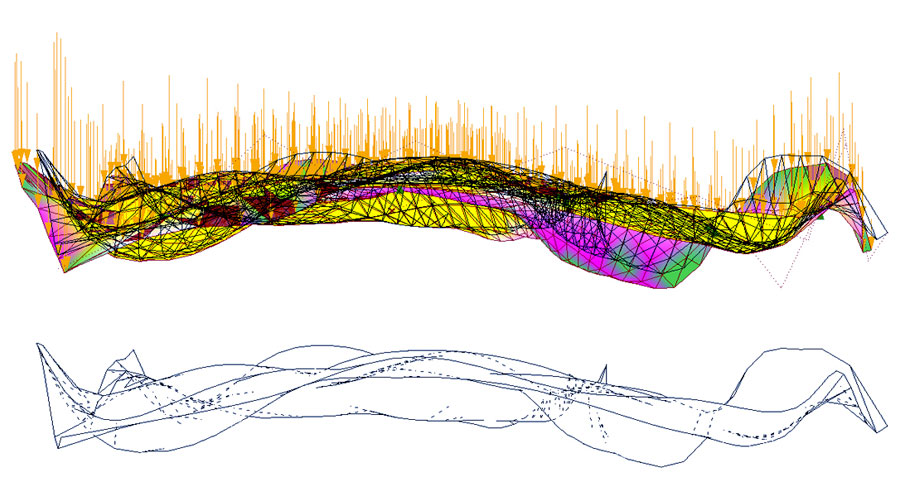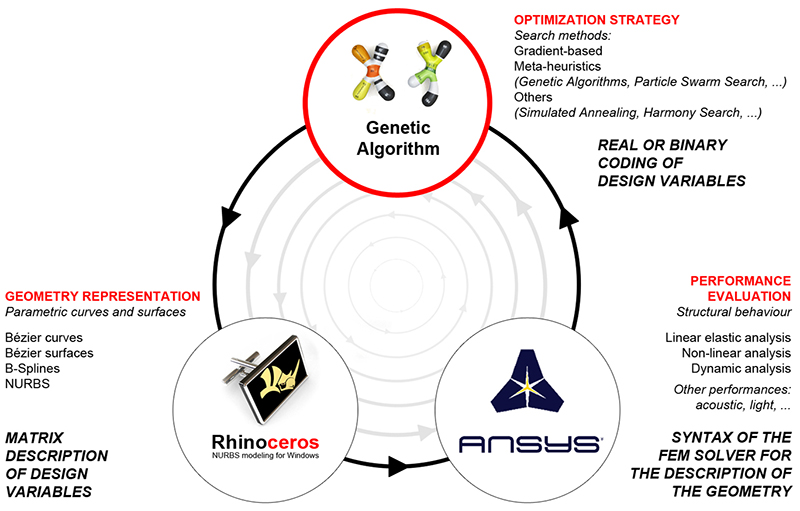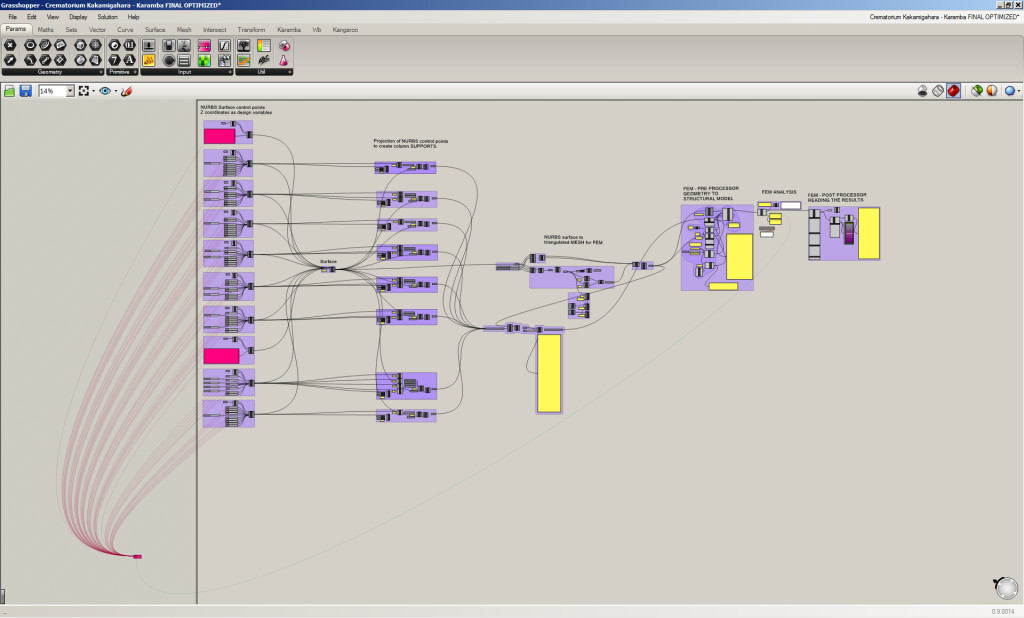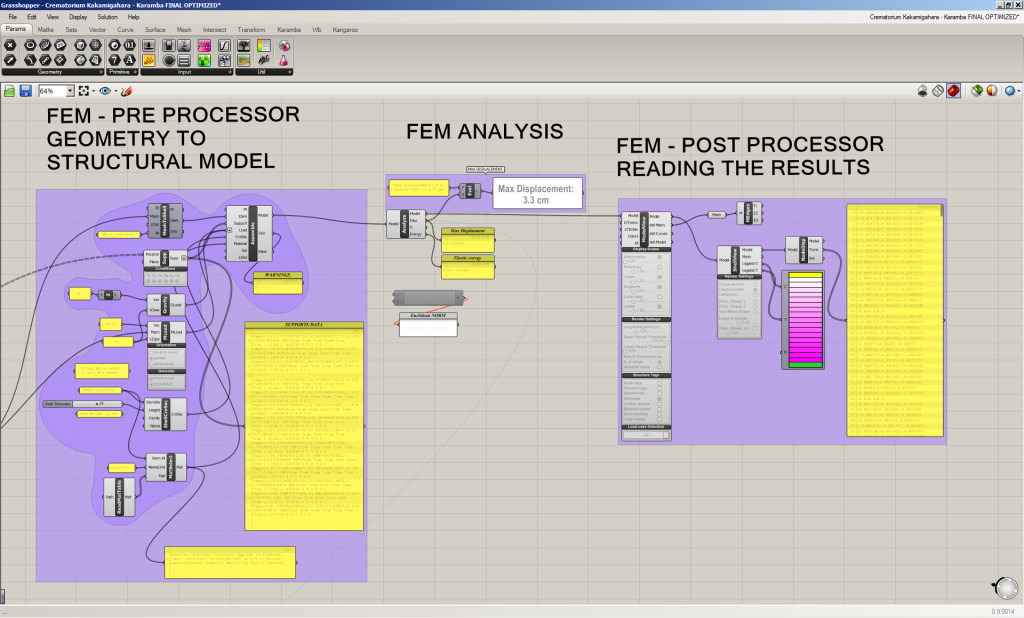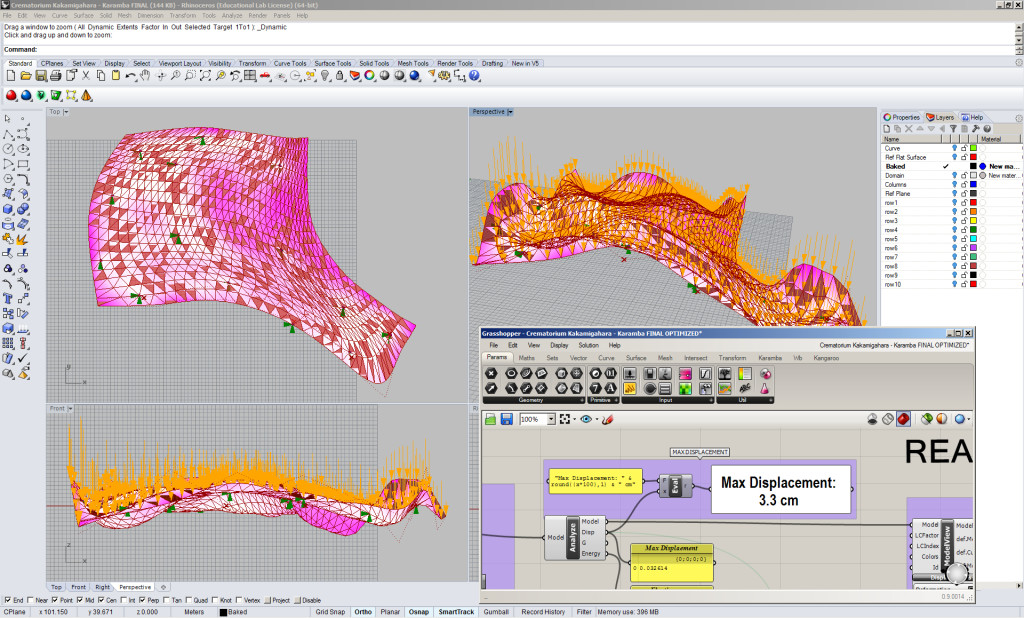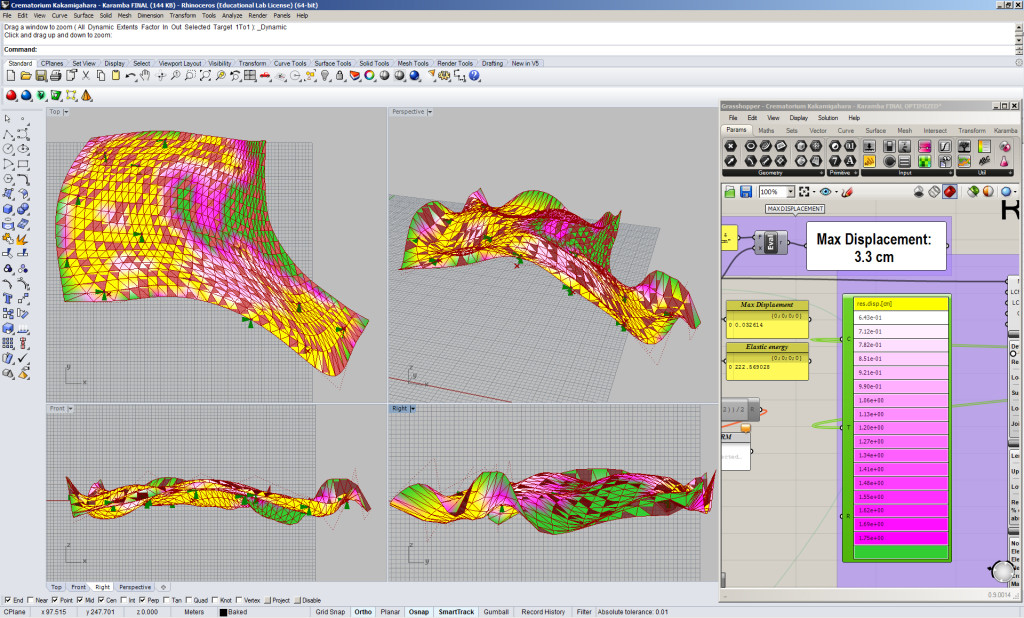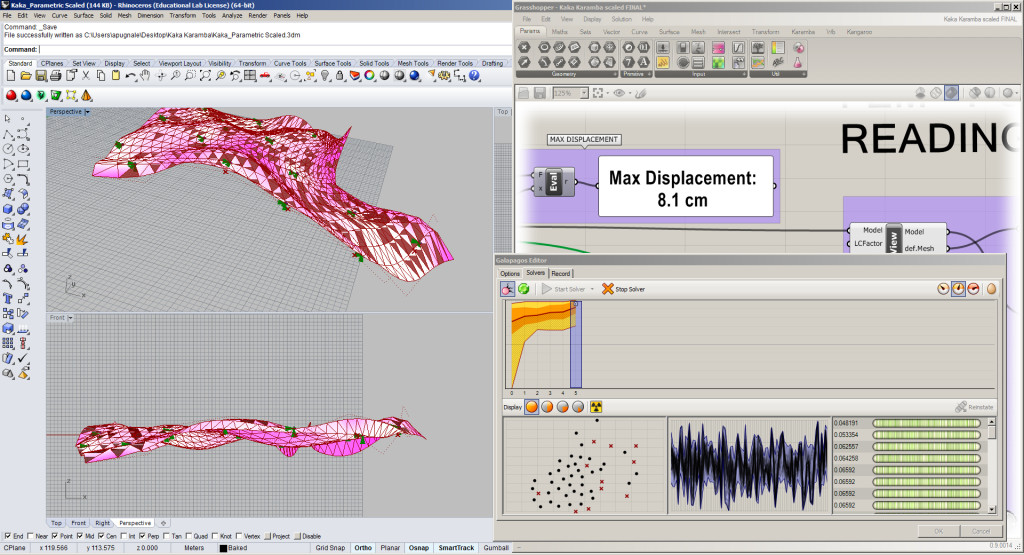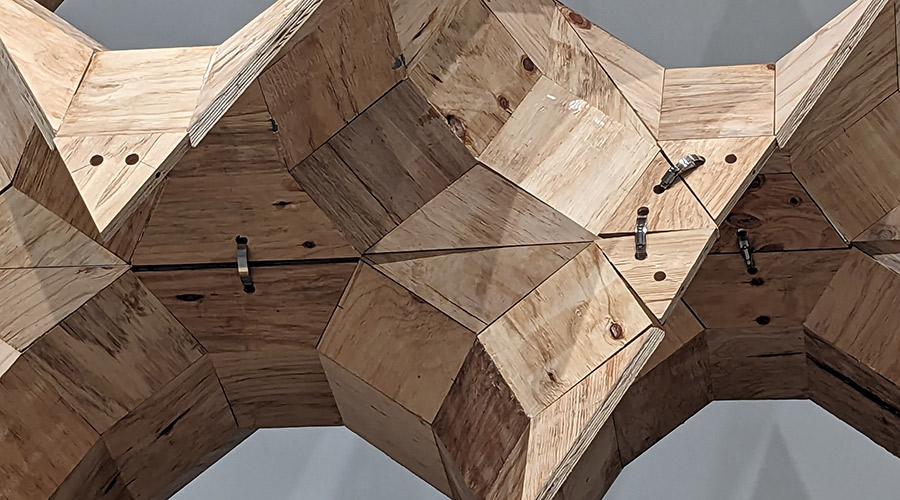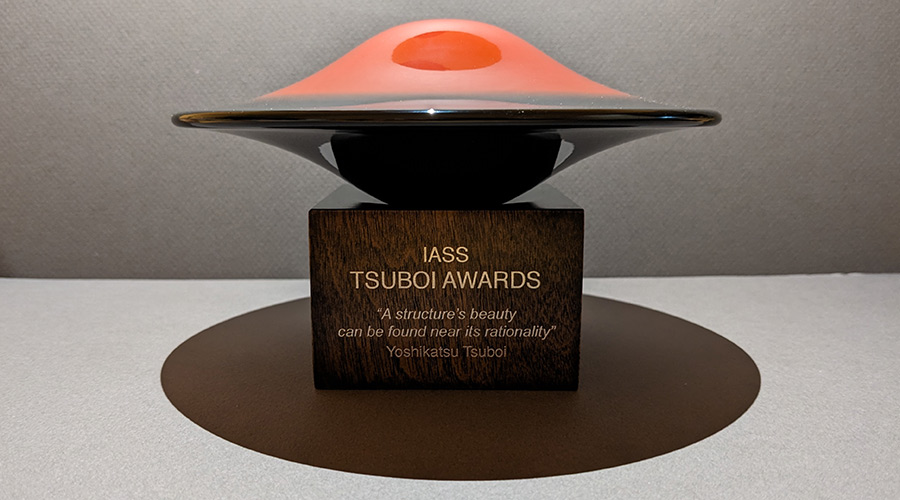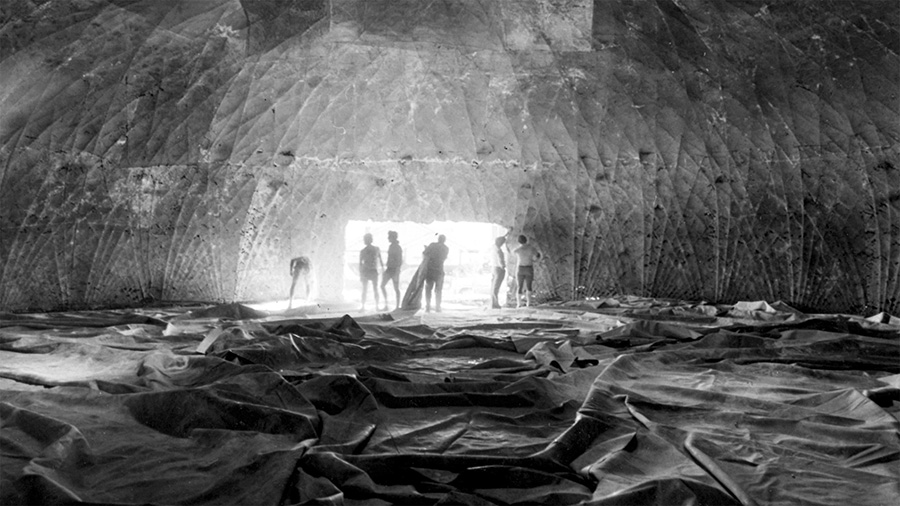In 2007, I started my PhD working on the development of a GA for the structural optimisation of free-form structures. I first tested the GA on the crematorium of Kakamigahara, designed by Toyo Ito and Mutsuro Sasaki consultants. The geometrical data, as well as the optimisation procedure were directly developed in Rhinoscript, the simple programming environment implemented by Rhinoceros. Ansys was used as the FEM solver to calculate the maximum displacements of the roof structure. The structural model was prepared in Rhinoscript, and then transferred to the FEM solver via a *.txt file (that run in batch mode). The optimisation procedure was conceived to be entirely automated.
The mesh was a triangular grid of 2500 elements. The concrete columns were considered as the only supports (fixed joints, even if that was not the real condition, as explained in the book “From control to design”). Regarding applied loading, gravity and self-weight were considered. The design variables of the problem were the Z coordinates of the control points of the NURBS surface of the roof. This was my way to “see” – or better interpret – the crematorium, and it was an exercise in which such architecture was freely redesigned.
The results of this research work were published in: Pugnale A., Sassone M., Morphogenesis and Structural Optimization of Shell Structures with the Aid of a Genetic Algorithm, “Journal of the International Association for Shell and Spatial Structures”, Vol. 48, n. 155, December 2007, pp.161-66. The can also be found within my PhD thesis, which is published online here (in the appendix you can find the original algorithm used).
